#indo-iranians
Text

Indo-Iranian Domination: once the Yamnaya horizon had petered out, by about 2000 BC, remaining on the steppe were leftover West Indo-European groups and their steppe masters, Indo-Iranians.
2 notes
·
View notes
Text
#polls#linguistics#languages#Slavic#Afro-Asiatic#ytilaremehpe-sselhtaed#Germanic#Indo-Iranian#Baltic#Romance#Uralic#Sino-Tibetan
2K notes
·
View notes
Text

English is part of a large language family that includes French, Welsh, Polish, Persian, Greek, and Albanian. They stem from a common ancestor reconstructed as Proto-Indo-European. The cardinal numerals from 1 to 10 illustrate their relationship well. Click the image for a selection.
#historical linguistics#linguistics#language#etymology#english#latin#french#german#spanish#welsh#irish#sanskrit#persian#polish#russian#italian#gothic#proto-germanic#proto-celtic#proto-indo-iranian#proto-balto-slavic#lithuanian#ancient greek#albanian#icelandic
87 notes
·
View notes
Text
Finnish words by unusual language of origin
*note: this does not list all the languages that the word was borrowed from, only the oldest known origin of it
*also: if you've never seen a word on this list, please don't doxx me. These are all real words. I don't spread misinformation. Why do I still need to put this in my posts
Job: Ammatti (from proto-celtic *ambaxtos)
Fun Fact: this is the same root that forms the english word “Ambassador”!
Wagon: Kärry (from proto-celtic *karros)
Fun Fact: This is the root that forms the English word “Car”!
Poem: Runo (from proto-celtic *rūnā)
Fun Fact: This is the root that forms the English word “Rune”!
Hikikomori: Hikky (from Japanese hikikomori 引き籠もり)
Clam: Simpukka (from Mandarin zhēnzhū 珍珠)
Goods: Tavara (from proto-turkic *tabar)
Fun Fact: words descended from this root can be found as far as China and Siberia!
Dungeon, jail: Tyrmä (from proto-turkic *türmä)
Fun Fact: This toot extends to Azerbaijan and even Yiddish!
Rauma (city name) (from proto germanic *straumaz meaning stream)
Cherry: Kirsikka (from ancient creek kerasós κερασός which might also have older forms)
Fun Fact: this word is widespread, even appearing in Arabic.
God: Jumala (possibly from proto-indo-iranian)
Fun Fact: This word could be related to Sanskrit dyumna द्युम्न if it is from proto-indo-iranian
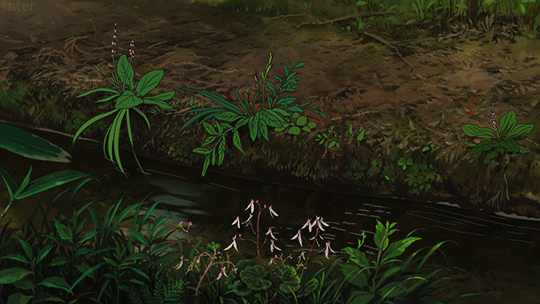
#finnish#langblr#langblog#language#study blog#suomen kieli#finnish language#finnish langblr#word roots#proto-celtic#proto-turkic#germanic#celtic#indo-iranian
97 notes
·
View notes
Text
Words you didn’t know are related: gold, yellow, cholera, arsenic, yolk, and more!
The Proto-Indo-European language (the hypothesized original ancestor language of most modern languages in Europe and South Asia, hereafter abbreviated “PIE”) had a root *ǵʰelh₃- ‘yellow, green’.
Aside: How can this word refer to both ‘yellow’ and ‘green’? Historically, color terms in the world’s languages referred to a broader range of colors than they do today, and focused more on the texture…
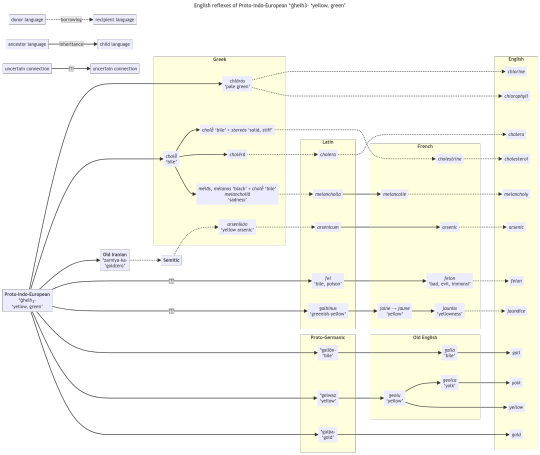
View On WordPress
#English#etymology#French#Greek#historical linguistics#historical reconstruction#Indo-European#Iranian#Latin#Latvian#Old English#Proto-Indo-European#Russian#Semitic#Slavic
46 notes
·
View notes
Text
Do you ever think about how we have completely bastardized what the terms “Caucasian” and “Aryan” are supposed to mean?
#Caucasian is from the region of Caucasia which is Georgia Azerbaijan and Armenia#aryan is the ancient indo iranians#language evolves whatever this is evolving in a bad way#unded rambles#language
7 notes
·
View notes
Text

Scythians, the ancient inhabitants of Eastern Europe.
12 notes
·
View notes
Text
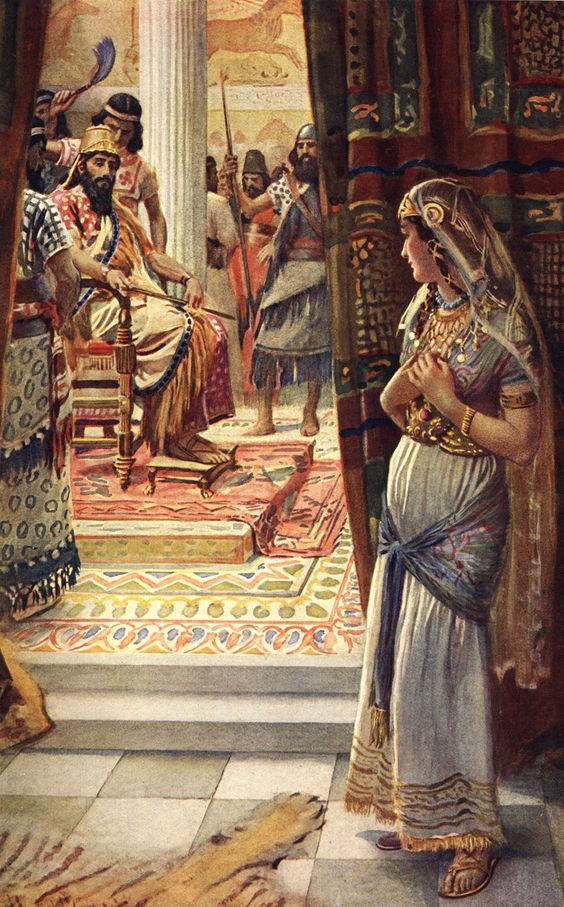
The biblical legend of Esther and Ahasuerus, Harold Copping,1927
#Harold Copping#love#rescue#bravery#women#1920s#pro-semitic#cultures#indo-iranians and semitic love#Judaism#building bridges#artwork#illustration#Persia#Iranian#Esther#Ahasuerus
5 notes
·
View notes
Photo
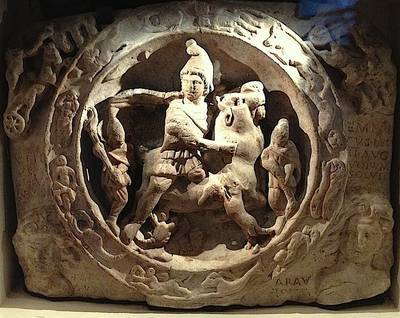
“The Mithraic Mysteries lead to the very heart of the magical Western tradition, a world characterized by self-affirmation, light, greatness, regal spirituality and spiritual regality. ln this path there is no room for escapism; or asceticism; or mortification of the self through humility and devotion; or renunciation and contemplative abstraction. Mithras' path is one of action, of solar power and of spirituality, which is opposed to both the dull and dreamy oriental universalism and to Christian sentimentalism and moralism”.
- Julius Evola, The Path of Enlightenment in the Mithraic Mysteries.
#Mithra#Mitraism#Indo-European religions#Indo-iranian#Mysteria Mitrae#Mithraic Mysteries#Roman religions#zarathustra#Varuna#Julius Evola#solar cult#Persian religions#persia#Ahura Mazda#rene guenon#The Path of Enlightenment in the Mithraic Mysteries#enlightenment#action#Christianity#Divine child#Rome#emperor julian#sol invictus#spirituality#Christianism#magical western tradition#path of action
44 notes
·
View notes
Text
Iranians’ and Indian Muslims’ different relationships to European philology explain why the two conceived of their languages in such contrary ways. This divergence reveals the historical contingency of the two narratives. It was not inevitable that Iranian nationalism would adopt the philological model of linguistic continuity, which is made clear by comparison with Indian Muslims’ conception of Urdu as a mixed language.
This history leads to several conclusions.
First, what appears today as national culture – unique and discretely bounded – is the product of exchange with others from beyond the borders of the nation-state. This is certainly true of modern Iran. Nationalism, and what I call ‘Persianate modernity’, is the veneer that hides the very conditions of cosmopolitan cooperation and exchange that generated national culture in the first place. This suggests something about culture: it has no inherent politics, no predetermined trajectory.
Culture is an empty vessel that can be attached to all kinds of political projects. Cross-cultural exchange similarly can serve reactionary ends just as well as progressive ones. At the turn of the 20th century, exchange between Iranians and Indians served to alienate Indians from the history of Persian literature. More recently, the idea of Indian Muslims’ cosmopolitan origins has marked them as outsiders to India – a narrative adopted by India’s prime minister Narendra Modi and other Hindu nationalists to help marginalise and disenfranchise millions of Indian Muslims.
Nor is ‘indigeneity’ inherently progressive, a fact also illustrated by India’s Hindu nationalists. They now describe themselves as an indigenous population besieged by Muslim allochthones, ie foreign intruders. Indeed, we find the language of indigeneity taken up by ethno-nationalists elsewhere in the contemporary world – from the European Right, claiming to defend its indigenous culture against foreign refugees, to Jewish supremacists in Israel, who insist on their own indigenous roots in the land.
#persian#farsi#urdu#indo-iranian#indo-aryan#languages#asia#culture#south asia#west asia#islam#iran#india
12 notes
·
View notes
Text
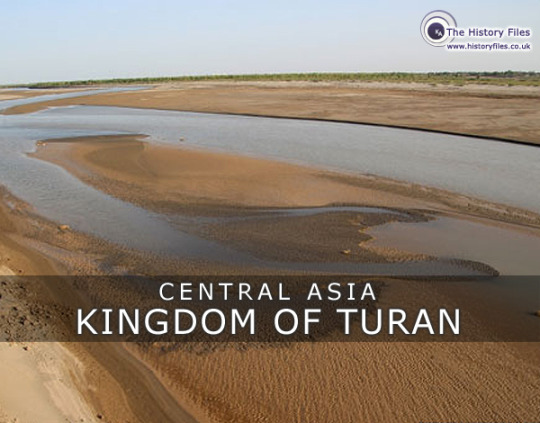
Kingdom of Turan: later myth ascribed a dynasty of Indo-Iranian rulers to southern Central Asia in the seventh century BC, one of whom murdered an early Persian figure, thereby kickstarting a brutal war between the two groups:
#history#historyfiles#archaeology#turan#centra asia#kingdoms#persia#persians#ancient central asia#ancient persia#indo-iranians
3 notes
·
View notes
Text
listening to scottish ppl talk makes me wanna return natavi's scottish accent
#actually hold on#broke: giving ashlanders offensive stereotypical indigenous accents#woke: giving them fucking celtic/gaelic accents since bethesda made some dunmer sound english#the funny option for this race based on indo-iranian cultures is to just give them british accents. fuck all life.
2 notes
·
View notes
Text

English (he/she) eats, Welsh ysa, Ancient Greek édei, Sanskrit átti and Polish je all stem from the same Indo-European verb. Over time, words change beyond recognition, undergoing regular sound changes and irregular alterations. Here's the family of eats.
#historical linguistics#linguistics#language#etymology#english#latin#dutch#spanish#german#scots#frisian#low saxon#limburgish#afrikaans#luxembourgish#yddish#sanskrit#proto-indo-iranian#latvian#lithuanian#russian#ukrainian#bulgarian#macedonian#old church slavonic#serbo-croation#slovene#slovak#czech#polish
134 notes
·
View notes
Text
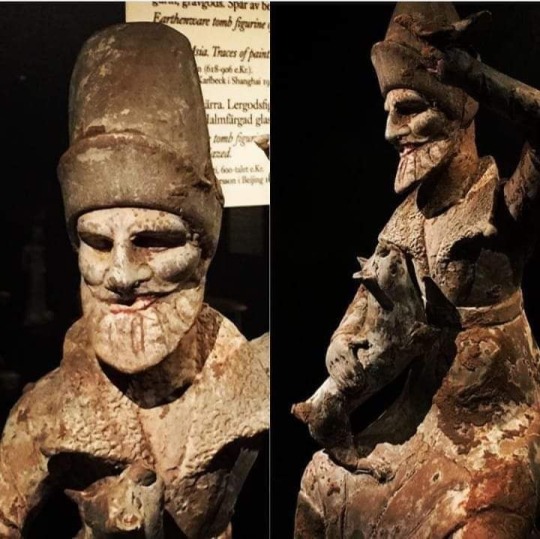
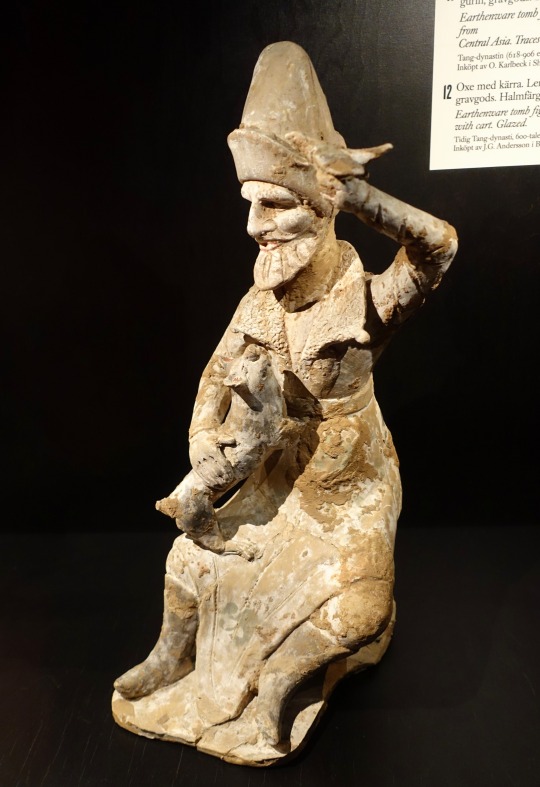
Tomb figurine of a man (Sogdian) from Central Asia and his pet. From China, Tang dynasty, 618-906 CE, earthenware with traces of paint - Östasiatiska museum, Stockholm, Sweden.
"This writer (Kim Jin-heon) has been interested in the life of ancient Sogdians for many years. They accumulated many riches through trade with Rome and Tang, and they built marvelous buildings in Samarkand, Uzbekistan that still exist today. They were especially prosperous from the 4th to the 8th century A.D.
Most Sogdians lived near Samarkand, a small-sized city, as descendants of Iranians. The area was a transportation hub as well as a strategic foothold, linking the East and West, between India and the Steppes region.
These geopolitical traits enticed powerful surrounding countries to conquer the region and have hegemony over it. This kind of history caused the tribe to always be subject to colonization. As a way to survive the situation, Sogdians learned various languages and acquired the traits of many cultures. They were known as outgoing and ambitious.
With the desert and the Silk Road as their main "natural" resources, Sogdians were raised at a young age to be merchants. For example, when boys became five, they began to learn foreign languages with the aim to engage in business."
-Kim Jin-heon, The Korea Times
#sogdiana#iranian#art#history#dog art#ancient history#statue#museums#ancient art#tang dynasty#indo european
52 notes
·
View notes
Text
The first letter change from 'a' to 'i' in the words Andra to Indra and Aryan to Iran is a common phenomenon in Indo-Iranian languages called "Satemization." Satemization refers to the shift in pronunciation of the Proto-Indo-European (PIE) velar consonants (/k/, /g/, and /gʰ/) to palatal or postalveolar sounds (/s/, /ʃ/, and /ʒ/) in the Indo-Iranian branch of the language family. This change occurred in the Indo-Iranian language branch around 1500 BCE, which led to the development of the satem languages (such as Sanskrit and Persian) from the earlier centum languages (such as Latin and Greek).
#satemization#linguistics#sanskrit#iranian#avestan#hindi#indo european languages#languages#indo iranian#indo aryan
3 notes
·
View notes
Text
Finnish
orja /ˈorjɑ/
slave
From Proto-Finnic *orja (“slave, servant”), from Proto-Finno-Permic *orja, from Proto-Indo-Iranian *áryas ("Aryan": autonymic (self-identifying) ethnonym of the respective Indo-Iranian peoples, i.e. the Indo-Aryans and the Iranians).
Cognates include Estonian ori, Erzya уре (ure) and Udmurt вар (var).
WIKTIONARY
5 notes
·
View notes